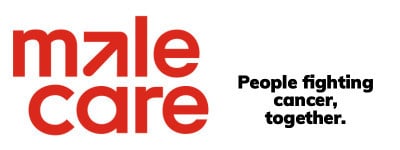Breast cancer in men is treated the same as breast cancer in women.
Initial Surgery
Most men diagnosed with breast cancer will receive a modified radical mastectomy (removal of the breast, some of the lymph nodes under the arm, the lining over the chest muscles, and sometimes part of the chest wall muscles).
Adjuvant Therapy
Therapy given after an operation when cancer cells can no longer be seen is called adjuvant therapy. Even if the doctor removes all the cancer that can be seen at the time of the operation, the patient may be given radiation therapy, chemotherapy, and/or hormone therapy after surgery to try to kill any cancer cells that may be left.
Node-negative: For men whose cancer is node-negative (cancer has not spread to the lymph nodes), adjuvant therapy should be considered on the same basis as for a woman with breast cancer because there is no evidence that response to therapy is different for men and women.
Node-positive: For men whose cancer is node-positive (cancer has spread to the lymph nodes), adjuvant therapy may include the following:
Chemotherapy plus tamoxifen (to block the effect of estrogen).
Other hormone therapy.
These treatments appear to increase survival in men as they do in women. The patient’s response to hormone therapy depends on the presence of hormone receptors (proteins) in the tumor. Most breast cancers in men have these receptors. Hormone therapy is usually recommended for male breast cancer patients, but it can have many side effects, including hot flashes and impotence (the inability to have an erection adequate for sexual intercourse).
Distant Metastases
For men with distant metastases (cancer that has spread to other parts of the body), hormone therapy, chemotherapy, or a combination of both has shown some success. Hormone therapy may include the following:
Orchiectomy (the removal of the testicles to decrease hormone production).
Luteinizing hormone-releasing hormone agonist with or without total androgen blockade (to decrease the production of sex hormones).
Tamoxifen for cancer that is estrogen-receptor positive.
Progesterone (a female hormone).
Aminoglutethimide (to lessen the amount of estrogen produced).
Hormone therapies may be used in sequence (one after the other). Standard chemotherapy regimens may be used if hormone therapy does not work. Men usually respond to therapy in the same way as women who have breast cancer.
Treatment Options for Locally Recurrent Disease
For men with locally recurrent disease (cancer that has come back in a limited area after treatment), treatment is usually either:
Surgery combined with chemotherapy; or
Radiation therapy combined with chemotherapy.
Research Abstract
Breast cancer in the male: a retrospective analysis of 17 cases
S. Jankovic, A. Petricevic, N. Ilic, J. Bilic, S. Andelinovic, D. Primorac
Split/HR
Purpose: The aim of this study is to review 17 cases of the breast cancer in the male threated within the period 19881997 at the University Hospital Split, Croatia.
Methods and Materials: Patients age ranged from 53 to 77 years, (average 64.2 ± 8.4 years). Clinical examination and mammography were the basic diagnostic modalities. Mammography were performed on Senograph 500 “CGR” and Mammomat 200 (Siemens) at he Department of Radiology. Surgery were performed at the Department of Surgery UHS.
Results: At the time of diagnosis, 6 (35.3%) patients were at stage I, 9 (53%) at stage II, and 2 (11.7%) at stage IV. In all cases surgery was the first choice of therapy while modified radical mastectomy and tumorectomy were performed in 14 or in 3 patients respectiwely. Histology revealed invasive ductal carcinoma in all cases. After a follow-up period (ranging from 11118 months), 8 (47%) patients had died, and 9 (53%) survived. The overall median survival for all patients was 4.7 ± 2.76 years.
Conclusion: Our results suggested that the breast cancer in the male should be staged in the same way as it is in female. The primary threatment is surgical resection (modified radical mastectomy is the predominant). Our findings suggests no difference in prognosis of the breast cancer in the male of in the female. Mammography with clinical examination have a primary position in diagnosis.
